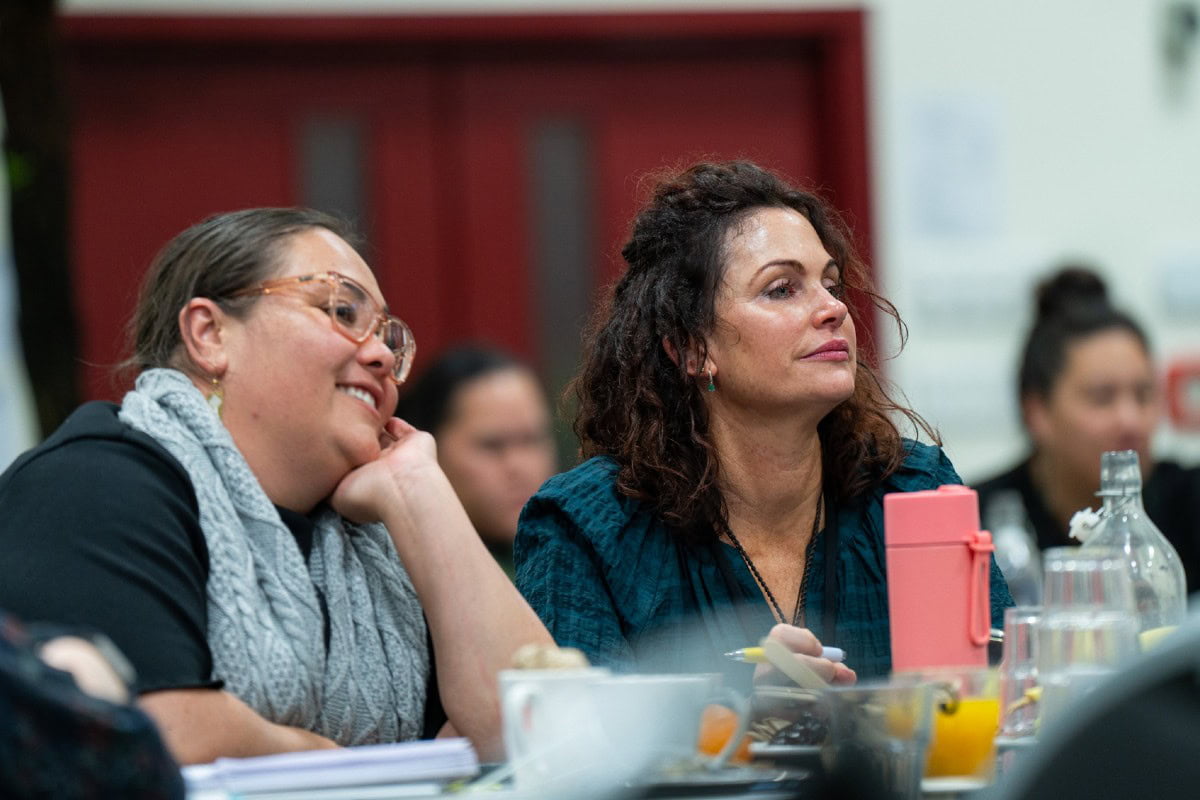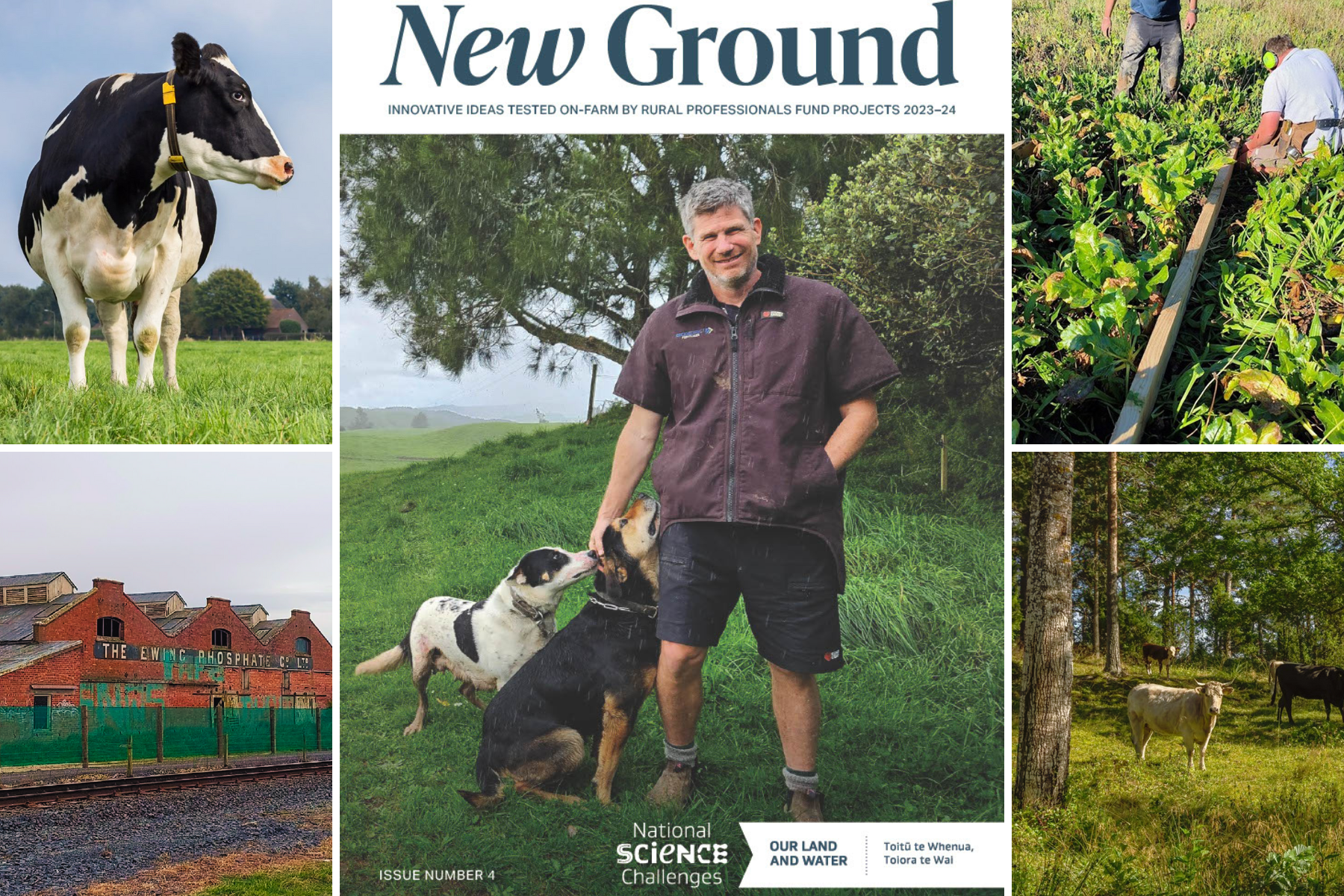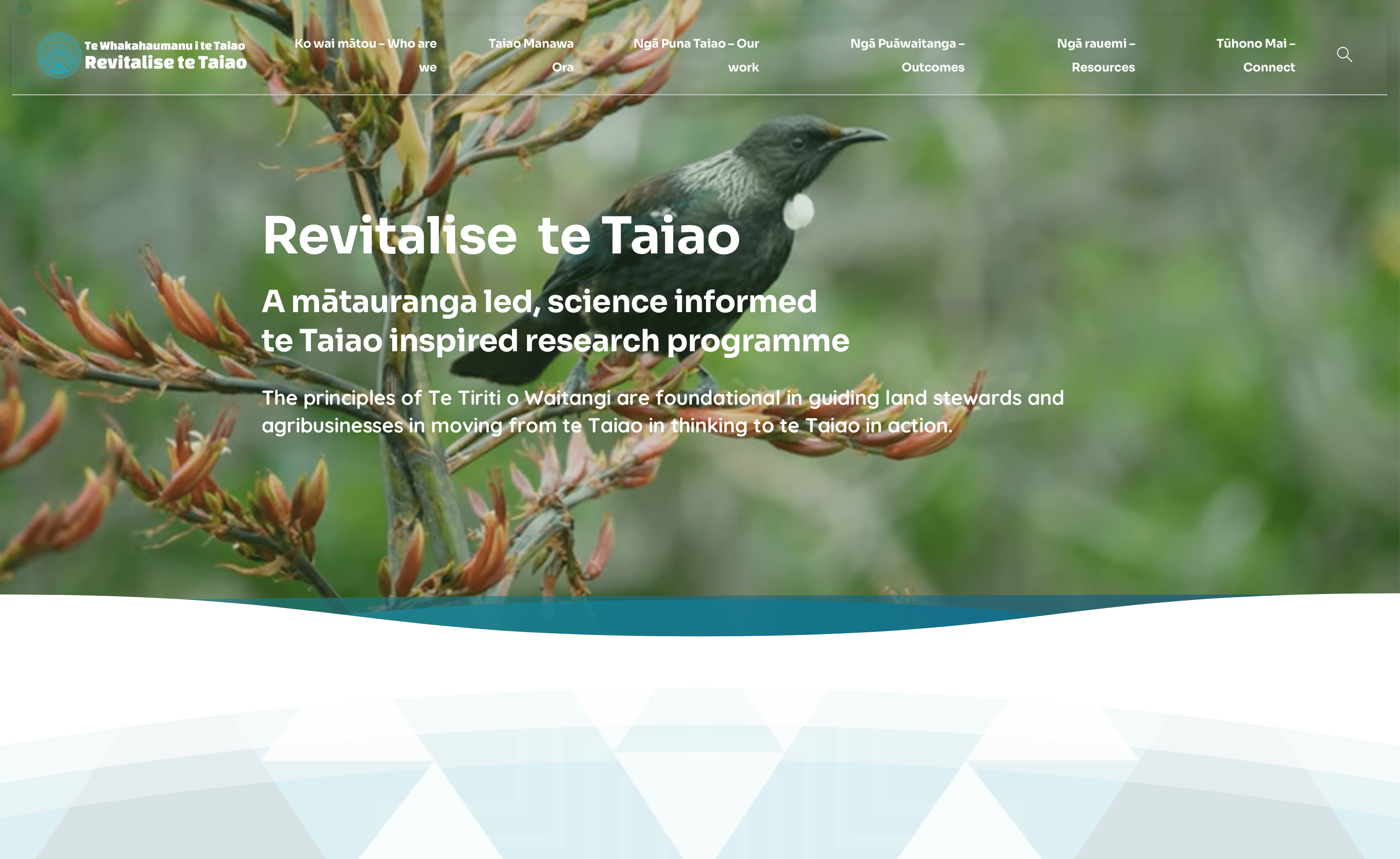Transforming Soil Legacies
Farmers interviewed through the place-based Revitalise Te Taiao project share their personal journeys and experience in transforming the soil on their land.
Based in the Bay of Plenty and Waikato, the Rere ki Uta, Rere ki Tai project is testing farming methods that aim to enhance the mana and mauri of the soil across 10 dairy farms. Four of these farms share their experience of trialing new approaches as part of this project. Hear their personal stories in the videos below.
Rere ki Ute, Rere ki Tai is part of the Revitalise Te Taiao research programme. This research has pilots in three locations, working alongside agribusinesses and communities as they progress land-use change, work with value chains and connect with markets to revitalise te Taiao.
Tainui Group Holdings
The Mangatea Stream that passes through the farm of the same name has always been a food source for Māori of the area, yet its significance runs even deeper than its ability to sustain the people.
Tied into the significance of the land here is the history of tribes that trace their ancestry back to the voyagers on the Tainui waka.
The 200ha Mangatea farm is owned by Tainui Group Holdings and is currently milking 580 cows. Tainui Group Holdings owns over 4000 hectares of Waikato land that supports dairy, sheep, beef, and forestry operations on behalf of its tribal owners.
Mozz Trueman is implementing changes on the ground after consulting with mana whenua about their aspirations, taking a step back and having a look at what’s going on under the soil.
Scylla Farm
Poor pasture and long hours forced Pukehina farmer Mohi Beckham to rethink conventional farming.
Mohi was raised in a big family and learnt from his late mum to appreciate the mauri, or life force, of soils and the food that comes as a result.
His brother’s 208ha Scylla Farm reaches into an open valley of mixed volcanic ash, pumice and gley soils that when purchased in mid-2019, were covered in a thick blanket of nutrition-deficient kikuyu grass with cows that were losing weight.
The Bay of Plenty farmer believed reliance on constant fertiliser application and animals in less than optimum health wasn’t good for the land or the people on it.
Several years on, the challenges continue with unpredictable and unprecedented weather events, but Mohi, his cows and Scylla Farm are in a very different state thanks to his focus on values, which led to a deeper look at his soil.
Wilith Farm
“We thought artificial fertiliser would fix the soil,” explains dairy farmer Miah Smith of Atiamuri, “not knowing anything about the biology and no-one had taught us from 20 years of dairy farming, we were pretty much at a loss for about three or four years.”
Wilith Farm is a forestry conversion that had been farmed for three years with conventional methods when Miah and Jenny Smith moved in, but after trial and error and escalating costs, weeds and animal health issues, they were willing to do the unthinkable.
They listened to Australian soil scientist Christine Jones about soil biology, and trialled regenerative agriculture methods that allowed them to cut back on synthetic inputs and sew diverse pasture species that built the biology of the soil.
Eleven seasons on, Miah, Jenny and the couple’s two sons hosted 100 farmers and agri consultants to showcase the thriving soil and pasture on Wilith Farm, and their happy, docile cows that are in optimal health.
Stanfred Farm
Farmers like Warrick Davey – at the age of 82 – are at the forefront of scientific study to turn around the history of New Zealand’s farming impact on our soil.
The health of the soil, of waterways on farms and the stories and wellbeing of farmers themselves is being captured in the Rere ki Uta Rere ki Tai research project.
Warrick has returned to his family’s Stanfred Farm on the Hauraki Plains and is bringing old ways, sharing his wisdom, and learning new scientific advances as he and wife Jos aim for a farm that has no external inputs at all.
Warrick’s grandparents Richard and Elizabeth Davey arrived in 1880 from Cornwall and Devon, England. Warrick’s uncle Stan was born first with three boys and two girls in the family. Warrick’s father Fred was born in 1897, hence the name Stanfred Farm.
Through the land drainage and construction of miles of stop banks, Stanfred farm is among the productive land left from thousands of hectares balloted by the Government for the development of dairy farms at the turn of the 20th century.
More information:
- Find out more about Rere ki Uta, Rere ki Tai and also via the Agrisea website
- Rere ki Ute, Rere ki Tai is one of three projects in the Revitalise Te Taiao research programme
Author
 View Our Strategy Document 2019 – 2024
View Our Strategy Document 2019 – 2024



